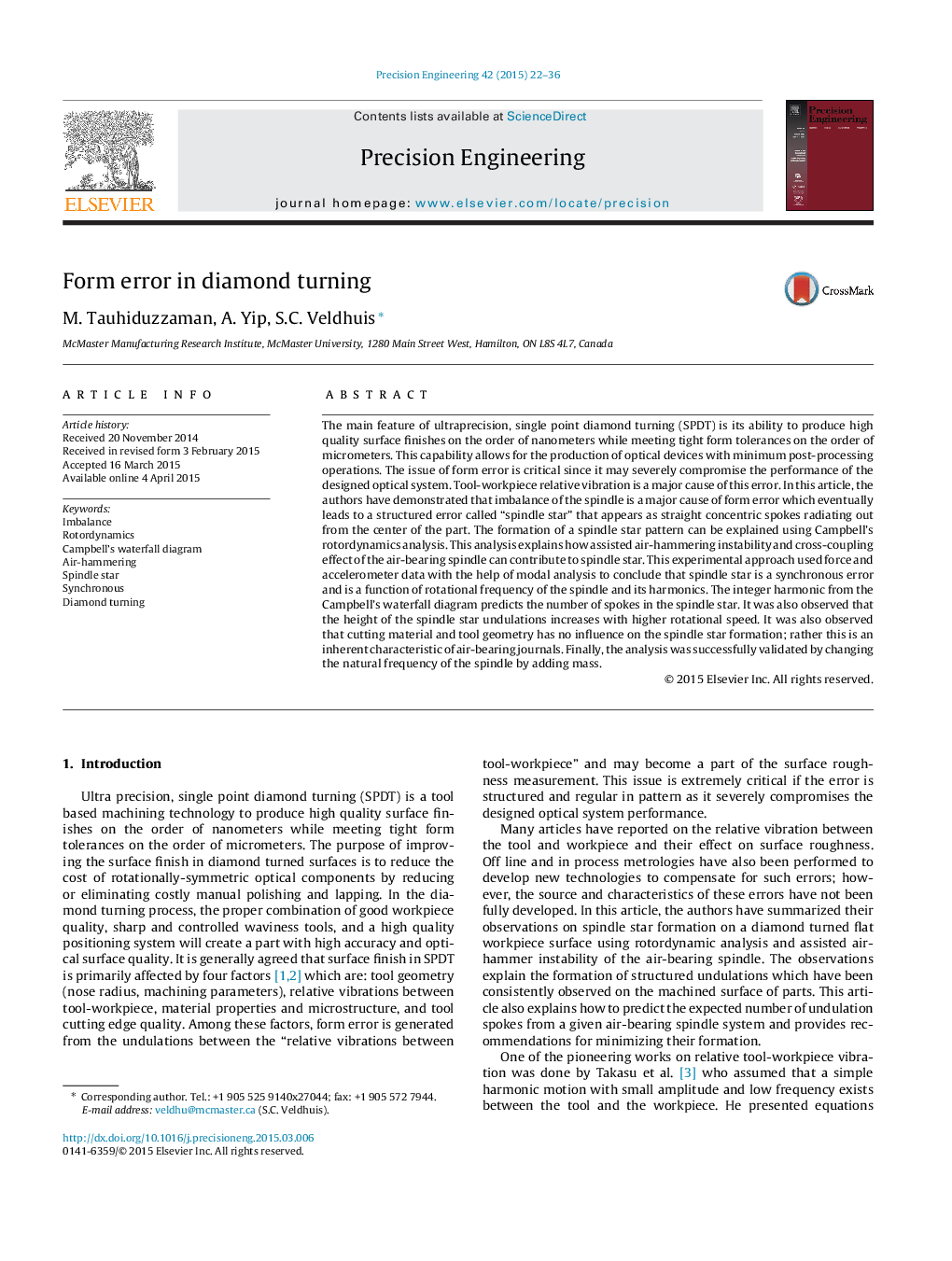| کد مقاله | کد نشریه | سال انتشار | مقاله انگلیسی | نسخه تمام متن |
|---|---|---|---|---|
| 803861 | 1467846 | 2015 | 15 صفحه PDF | دانلود رایگان |
• Imbalance of the spindle is a major cause of form error which eventually leads to assisted air-hammering instability and cross-coupling effect of the air-bearing spindles.
• These effects lead to a structured form error called “spindle star” that appears as straight concentric spokes radiating out from the center of the part.
• The formation of a spindle star pattern can be explained and predicted using Campbell's rotordynamics analysis.
• This experimental approach used force and accelerometer data with the help of modal analysis to conclude that spindle star is a synchronous error.
• The height of the spindle star undulations increases with higher rotational speed and can be influenced by changing the natural frequency and damping.
The main feature of ultraprecision, single point diamond turning (SPDT) is its ability to produce high quality surface finishes on the order of nanometers while meeting tight form tolerances on the order of micrometers. This capability allows for the production of optical devices with minimum post-processing operations. The issue of form error is critical since it may severely compromise the performance of the designed optical system. Tool-workpiece relative vibration is a major cause of this error. In this article, the authors have demonstrated that imbalance of the spindle is a major cause of form error which eventually leads to a structured error called “spindle star” that appears as straight concentric spokes radiating out from the center of the part. The formation of a spindle star pattern can be explained using Campbell's rotordynamics analysis. This analysis explains how assisted air-hammering instability and cross-coupling effect of the air-bearing spindle can contribute to spindle star. This experimental approach used force and accelerometer data with the help of modal analysis to conclude that spindle star is a synchronous error and is a function of rotational frequency of the spindle and its harmonics. The integer harmonic from the Campbell's waterfall diagram predicts the number of spokes in the spindle star. It was also observed that the height of the spindle star undulations increases with higher rotational speed. It was also observed that cutting material and tool geometry has no influence on the spindle star formation; rather this is an inherent characteristic of air-bearing journals. Finally, the analysis was successfully validated by changing the natural frequency of the spindle by adding mass.
Journal: Precision Engineering - Volume 42, October 2015, Pages 22–36
